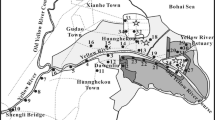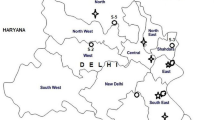Abstract
Polycyclic aromatic hydrocarbons (PAHs) are ubiquitous environmental pollutants that frequently accumulate in soils. There is therefore a requirement to determine their levels in contaminated environments for the purposes of determining impacts on human health. PAHs are a suite of individual chemicals, and there is an ongoing debate as to the most appropriate method for assessing the risk to humans from them. Two methods predominate: the surrogate marker approach and the toxic equivalency factor. The former assumes that all chemicals in a mixture have an equivalent toxicity. The toxic equivalency approach estimates the potency of individual chemicals relative to the usually most toxic Benzo(a)pyrene. The surrogate marker approach is believed to overestimate risk and the toxic equivalency factor to underestimate risk. When analysing the risks from soils, the surrogate marker approach is preferred due to its simplicity, but there are concerns because of the potential diversity of the PAH profile across the range of impacted soils. Using two independent data sets containing soils from 274 sites across a diverse range of locations, statistical analysis was undertaken to determine the differences in the composition of carcinogenic PAH between site locations, for example, rural versus industrial. Following principal components analysis, distinct population differences were not seen between site locations in spite of large differences in the total PAH burden between individual sites. Using all data, highly significant correlations were seen between BaP and other carcinogenic PAH with the majority of r 2 values > 0.8. Correlations with the European Food Standards Agency (EFSA) summed groups, that is, EFSA2, EFSA4 and EFSA8 had even higher correlations (r 2 > 0.95). We therefore conclude that BaP is a suitable surrogate marker to represent mixtures of PAH in soil during risk assessments.



Similar content being viewed by others
References
Atanassova, I., & Brummer, W. (2004). Polycyclic aromatic hydrocarbons of anthropogenic and biopedogenic origin in a colluviated hydromorphic soil of Western Europe. Geoderma, 120, 27–34.
ATSDR. (1995). Toxicological profile for polycyclic aromatic hydrocarbons (PAHs). Atlanta, US: US Department of Health and Human Services, Agency for Toxic Substances and Disease Registry (ATSDR).
Baars, A. J., Theelen, R. M. C., Janssen, P. J. C. M., Hesse, J. M., van Apeldoorn, M. E., Meijerink, M. C. M., et al. (2001). Re-evaluation of human-toxicological maximum permissable risks levels RIVM report 711701 025. Dutch National Institute of Public Health and the Environment (RIVM).
Baumard, P., Budzinski, H., Michon, Q., Garrigues, P., Burgeot, T., & Bellocq, J. (1998). Origin and bioavailability of PAHs in the Mediterranean sea from mussel and sediment records. Estuarine, Coastal and Shelf Science, 47(1), 77–90.
Bucheli, T. D., Blum, F., Desaules, A., & Gustafsson, O. (2004). Polycyclic aromatic hydrocarbons, black carbon, and molecular markers in soils of Switzerland. Chemosphere, 56(11), 1061–1076. doi:10.1016/j.chemosphere.2004.06.002.
CCME (Canadian Council of Ministers of the Environment). (2010). Canadian soil quality guidelines for carcinogenic and other polycyclic aromatic hydrocarbons (Environmental and human health effects). Scientific Criteria Document (revised). 216 pp. Downloaded from http://www.ccme.ca/assets/pdf/pah_soqg_scd_1445.pdf, May 2012.
Chrysikou, L., Gemenetzis, P., Kouras, A., Manoli, E., Terzi, E., & Samara, C. (2008). Distribution of persistent organic pollutants, polycyclic aromatic hydrocarbons and trace elements in soil and vegetation following a large scale landfill fire in northern Greece. Environment International, 34(2), 210–225.
De La Torre-Roche, R. J., Lee, W. Y., & Campos-Diaz, S. I. (2009). Soil-borne polycyclic aromatic hydrocarbons in El Paso, Texas: Analysis of a potential problem in the United States/Mexico border region. Journal of Hazardous Materials, 163(2–3), 946–958.
Environment Agency (EA). (2007). UK soil and herbage pollutant survey UKSHS report No. 9 environmental concentrations of polycyclic aromatic hydrocarbons in UK soil and herbage.
Essumang, D. K., Kowalski, K., & Sogaard, E. G. (2011). Levels, distribution and source characterization of polycyclic aromatic hydrocarbons (PAHs) in topsoils and roadside soils in Esbjerg, Denmark. Bulletin of Environmental Contamination and Toxicology, 86(4), 438–443. doi:10.1007/s00128-011-0232-0.
European Food Safety Authority. (2008). Polycyclic aromatic hydrocarbons in food—scientific opinion of the panel on contaminants in the food chain.
Heywood, E., Wright, J., Wienburg, C. L., Black, H. I., Long, S. M., Osborn, D., et al. (2006). Factors influencing the national distribution of polycyclic aromatic hydrocarbons and polychlorinated biphenyls in British soils. Environmental Science and Technology, 40(24), 7629–7635.
IARC. (2010). IARC monographs on the evaluation of carcinogenic risks to humans. Volume 92: Some non-heterocyclic polycyclic aromatic hydrocarbons and some related exposures. Lyon, France: IARC.
Jiang, Y. F., Wang, X. T., Wang, F., Jia, Y., Wu, M. H., Sheng, G. Y., et al. (2009). Levels, composition profiles and sources of polycyclic aromatic hydrocarbons in urban soil of Shanghai, China. Chemosphere, 75(8), 1112–1118. doi:10.1016/j.chemosphere.2009.01.027.
Kroese, E. D., Muller, J. J. A., Mohn, G. R., Dortant, P. M., & Wester, P. W. (2001). Tumorigenic effects in Wistar rats orally administered benzo(a)pyrene for two years (gavage studies). Implication for human risks associated with oral exposure to polycyclic aromatic hydrocarbons, RIVM.
Li, X. H., Ma, L. L., Liu, X. F., Fu, S., Cheng, H. X., & Xu, X. B. (2006). Polycyclic aromatic hydrocarbon in urban soil from Beijing, China. Journal of Environmental Sciences (China), 18(5), 944–950.
Lundstedt, S., White, P. A., Lemieux, C. L., Lynes, K. D., Lambert, I. B., Oberg, L., et al. (2007). Sources, fate, and toxic hazards of oxygenated polycyclic aromatic hydrocarbons (PAHs) at PAH-contaminated sites. Ambio, 36(6), 475–485.
Maliszewska-Kordybach, B., Smreczak, B., & Klimkowicz-Pawlas, A. (2009). Concentrations, sources, and spatial distribution of individual polycyclic aromatic hydrocarbons (PAHs) in agricultural soils in the Eastern part of the EU: Poland as a case study. Science of the Total Environment, 407(12), 3746–3753. doi:10.1016/j.scitotenv.2009.01.010.
Morillo, E., Romero, A. S., Maqueda, C., Madrid, L., Ajmone-Marsan, F., Grcman, H., et al. (2007). Soil pollution by PAHs in urban soils: A comparison of three European cities. Journal of Environmental Monitoring, 9(9), 1001–1008. doi:10.1039/b705955h.
Nadal, M., Schuhmacher, M., & Domingo, J. L. (2004). Levels of PAHs in soil and vegetation samples from Tarragona County, Spain. Environmental Pollution, 132(1), 1–11. doi:10.1016/j.envpol.2004.04.003.
Nadal, M., Schuhmacher, M., & Domingo, J. L. (2007). Levels of metals, PCBs, PCNs and PAHs in soils of a highly industrialized chemical/petrochemical area: Temporal trend. Chemosphere, 66(2), 267–276.
Nam, J. J., Thomas, G. O., Jaward, F. M., Steinnes, E., Gustafsson, O., & Jones, K. C. (2008). PAHs in background soils from Western Europe: Influence of atmospheric deposition and soil organic matter. Chemosphere, 70(9), 1596–1602. doi:10.1016/j.chemosphere.2007.08.010.
Nathanail, P., McCaffrey, C., Ashmore, M., Cheng, Y., Gillett, A., Ogden, R., et al. (2009). The LQM/CIEH generic assessment criteria for human health risk assessment (2nd ed.). Nottingham: Land Quality Press.
Office for Environmental Health Hazard Assessment. (1992). Expedited cancer potency factors and proposed regulatory levels for certain proposed carcinogens. California Environmental Protection Agency. Downloaded from http://oehha.ca.gov/prop65/pdf/expcancer.pdf, May 2012.
Tang, L., Tang, X. Y., Zhu, Y. G., Zheng, M. H., & Miao, Q. L. (2005). Contamination of polycyclic aromatic hydrocarbons (PAHs) in urban soils in Beijing, China. Environment International, 31(6), 822–828. doi:10.1016/j.envint.2005.05.031.
Tremolada, P., Parolini, M., Binelli, A., Ballabio, C., Comolli, R., & Provini, A. (2009). Seasonal changes and temperature-dependent accumulation of polycyclic aromatic hydrocarbons in high-altitude soils. Science of the Total Environment, 407(14), 4269–4277. doi:10.1016/j.scitotenv.2009.03.031.
United States Environmental Protection Agency (USEPA). (1993). Provisional guidance for quantitative risk assessment of polycyclic aromatic hydrocarbons, EPA/600/R-93/089.
US Environmental Protection Agency. (2010). Development of a relative potency factor (RPF) approach for polycyclic aromatic hydrocarbon (PAH) mixtures (external review draft). In EPA/635/R-08/012A (Ed.). Washington, DC: US EPA.
US Environmental Protection Agency (US EPA). (2002). Peer consultation workshop on approaches to polycyclic aromatic hydrocarbon (PAH) health assessment. EPA/635/R-02/005. National Centre for Environmental Assessment, Washington, DC.
Wang, Z., Chen, J., Yang, P., Qiao, X., & Tian, F. (2007). Polycyclic aromatic hydrocarbons in Dalian soils: Distribution and toxicity assessment. Journal of Environmental Monitoring, 9(2), 199–204. doi:10.1039/b617338c.
Wild, S. R., & Jones, K. C. (1995). Polynuclear aromatic hydrocarbons in the United Kingdom environment—a preliminary source inventory and budget. Environmental Pollution, 88(1), 91–108.
Author information
Authors and Affiliations
Corresponding author
Rights and permissions
About this article
Cite this article
Bull, S., Collins, C. Promoting the use of BaP as a marker for PAH exposure in UK soils. Environ Geochem Health 35, 101–109 (2013). https://doi.org/10.1007/s10653-012-9462-2
Received:
Accepted:
Published:
Issue Date:
DOI: https://doi.org/10.1007/s10653-012-9462-2




